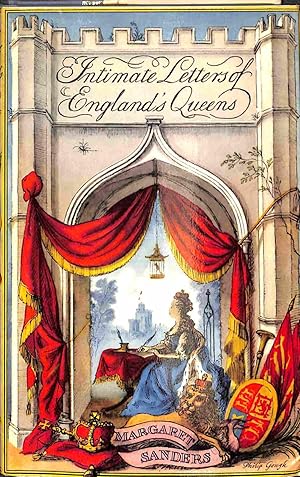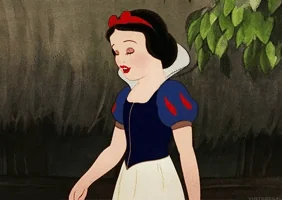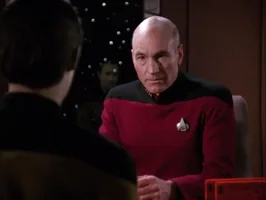So I finally (well, finally in this age of Amazon prime shipping means a week later) have my hands on Margaret Sanders’ Intimate Letters of the Queens of England (London: Museum Press LTD, 1957), which is the source Patrick Williams pointed to for his version of Katherine of Aragon’s final letter to Henry VIII.
I wanted to follow the clues like a good detective and see where Sanders found HER copy of the letter which she printed in Intimate Letters.


First off – this is a gorgeous old book and you can tell it is meant for a general audience – it says so in the preface. 🙂 Sanders meant to give readers an introduction to these queens as human beings with complicated emotional lives that can’t be distilled down to ‘divorced, beheaded, died…’ and tried to choose letters that display those relationships with others. “Historians must inevitably be prejudiced, either from religious, political, or personal attitudes,” Sanders notes, and then goes on to say that in her introductions to each of the queens and their letters that she just tried to give the bare minimum of factual information, but, like those aforementioned historians, she exhibits her own bias and personal opinions (apparently Henrietta Maria was “the loveliest of all England’s Queens” and Anna of Denmark had “no great pretensions to beauty” but she had a great personality).


This is particularly evident in Katherine’s introduction where she takes at face value Katherine’s virginity going into her second marriage (which, let’s face it, every historian who works on the Tudor period has their own opinion, but it’s far better as a scholar to present it as a complex unknown full of messy political, personal, and religious meanings rather than “In the meantime, this young widow of an unconsummated marriage…” which, technically, if it were unconsummated, it wouldn’t have been a complete marriage, but that’s beside the point).
Sanders includes helpful footnotes to explain who people are and to provide further context when it’s needed for the general audience who may not know who “My Lady of Salisbury” was… although reading through the footnotes, if I didn’t know that Lady Salisbury was Margaret de la Pole, the countess of Salisbury, I’d be further confused – “state-governess to Mary” and “Mary’s best friend next to her mother” are all that’s used to describe who she was. Another confusing point is that Mary I was “brought up in her mother’s Faith as a strict Roman Catholic.” This is certainly true, but it neglects the important consideration that it was also her father’s faith at the time, if you were a practicing Christian at the time, it most likely was your faith as well because the Roman Catholic church was the dominant church in western Europe.
Anywho, after taking the time to peruse the book and finding other fun tidbits that I may post later, I want to give you the transcription of the Final Letter as put in Intimate Letters and then share with you her citation.
My Lord and Dear Husband,
I commend me unto you. The hour of my death draweth fast on, and my case being such, the tender love I owe you forceth me, with a few words, to put you in remembrance of the health and safeguard of your soul, which you ought to prefer before all worldly matters, and before the care and tendering of your own body, for the which you have cast me into many miseries and yourself into many cares.
For my part I do pardon you all, yea, I do wish and devoutly pray God that He will also pardon you.
For the rest I commend unto you Mary, our daughter, beseeching you to be a good father unto her, as I heretofore desired. I entreat you also, on behalf of my maids, to give them marriage-portions, which is not much, they being but three. For all my other servants, I solicit a year’s pay more than their due, lest they should be unprovided for.
Lastly, do I vow, that mine eyes desire you above all things.
Sanders, Intimate Letters, 12.
And there’s one last bit that I’ve been saving for the end. I had to order another book to dig into this mystery. Most of the documents that Sanders brings together are from the royal archives at Windsor Castle, the Strickland sisters’ work The Lives of the Queens of England, or other letter collections. As a historian, one needs to be a good detective – even though it can take forever and lead you down rabbit holes that go nowhere, at least for the project you’re currently working on – and to be a good detective, one needs to follow the clues.
In Sander’s bibliography, The Final Letter wasn’t cited as from an archival source – it’s from another letter collection.

“Chatterton: Royal Letters” is all we get in Sander’s bibliography to note where SHE got this letter from. So I used my Googlefu and found that this citation refers to Royal Love Letters by E. K. Chatterton, originally published in 1911.
After a little more searching, I found a hardcover copy that will be winging its way to me from England soon. As soon as it does, I will update with more information.
The game is afoot!

![]() “Mine Eyes Desire You Above All Things” by courtney is licensed under a Creative Commons Attribution-NonCommercial-ShareAlike 4.0 International License.
“Mine Eyes Desire You Above All Things” by courtney is licensed under a Creative Commons Attribution-NonCommercial-ShareAlike 4.0 International License.

